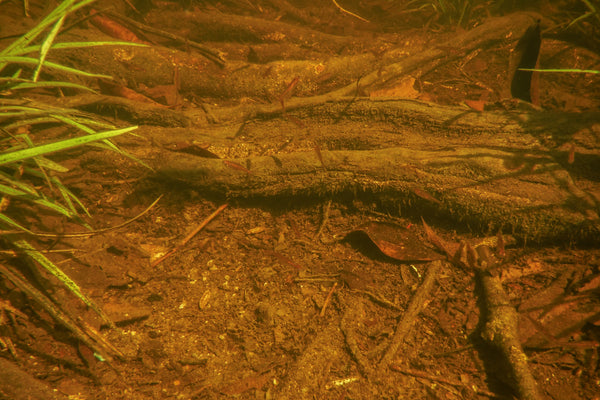- Continue Shopping
- Your Cart is Empty
Pools, ponds, riffles, rain, and current...
Those of you who regularly read this column know that I like to reflect frequently on the "process" of evolving and changing aquariums over time. I view every interaction with our tanks as an opportunity to reflect, observe, and manage the long-term evolution of them. And if you're like me- there are LOTS of interactions with your tanks!

Thursdays are water exchange days for my aquariums. And, rather than look at it as some task on a checklist of stuff to do, some necessary evil" chore- we regard them as... opportunities.
Yup, opportuntiies!
A water exchange represents an opportunity to refresh, reinvigorate, and interact with the aquarium on a much more detailed, intimate level. We've pointed out many times before that, in a blackwater/botanical-style aquarium, the regular water exchanges we conduct on our aquariums are, in many ways, very much a mimicry of what happens in the wild streams and rivers of the tropical world during the rainy season: New water is added to the environment, old botanical materials and leaves are swept away from their current locations, and a new set of materials are deposited in their place.
More so than perhaps other types of aquariums- the practice of replacing botanicals and leaves along with new water is a significant "weekly evolution" of the environment in this style of system.
Beyond a simple "editing ritual" or an aesthetic "refresh", this is a very dynamic process, yet one which also provides longer-term benefits for the ecosystem. Why? Because, as these newer materials are deposited, they not only help "reinforce" the matrix of botanicals already in place, they provide new physical "structure", new foraging areas, new chemical inputs (like tannins and other organics), and provide fresh material for the continued development of food webs.
Yeah, food webs- starting with microbial life and fungi, to algae, and on up to insects and crustaceans, which form the "backbone" of the diet of many of our fishes which hail from these habitats.

In nature, the rain also effects the depth and flow rates of many of the waters in this region, with the associated impacts mentioned above, as well as their influence on stream structures, like submerged logs, sandbars, rocks, etc. Much in the way we might move a few things around now and again during maintenance!
Ever think about it like that? Yeah, it's truly amazing how we can sort of replicate these processes, simply by doing the stuff we do to maintain our aquariums!
And stuff certainly gets moved around, re-distributed, and otherwise affected in the wild as a result of rain!
Like, a LOT!

For example, seasonal water levels can rise up to 20 meters (65 feet) in the middle Amazon region! That's a lot of water! Towards the mouth of the Amazon, the yearly change becomes less and less, but even near the Rio Xingu, it can still be as much as 4 meters (12 feet).
This seasonal deluge has huge impact on not only the physical structure of the associated rivers, streams, and their surrounding forest terrain, but on the fishes and other creatures which reside in them.






At the very least, I think it important to continue looking at our water exchanges and botanical additions/removals in the context of how natural bodies of water actually function.










Scott Fellman
Author